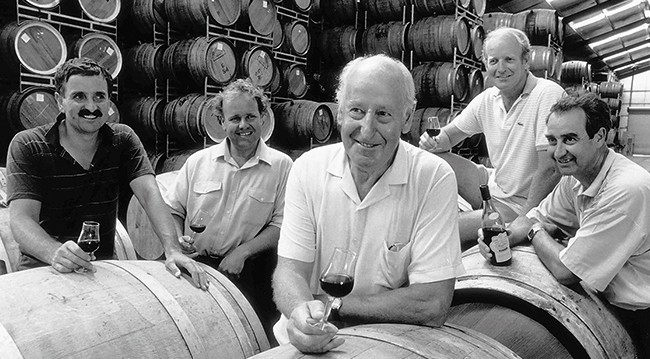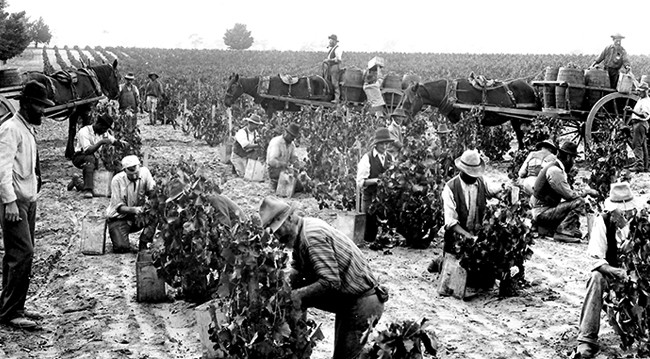Australian family owned businesses have an estimated wealth of $4.3 trillion. We profile 4 successful family businesses and assess how they handled their generational transitions.
About 70 per cent of Australian businesses are family owned — and they employ about 50 per cent of the workforce — so their wellbeing directly affects the economy. However, there’s no easy way to measure their health. Typically, they are privately held and intent on minding their own business, so what happens inside family owned and/or run enterprises often only goes public in the wake of a bust-up or when peeved members wrangle over assets in court. Family businesses can face tension points that many find unresolvable, and inter-generational transition and allocation of wealth are common nemeses.
Statistics from Family Business Australia capture the reality. More than 30 per cent of all family-owned businesses survive into the second generation; 12 per cent will still be viable in the third generation; and just three per cent will be operating in the fourth generation and beyond.
Why do they fracture? “Predominantly, it’s family dynamics and relationships, the level of trust and communication in families, and how well prepared and engaged the heirs and successors are,” says Fiona Hinrichsen GAICD, associate partner at EY’s Family Office Advisory Services, and formerly a client director with the Myer Family Company (now Mutual Trust).
As more generations join the mix, business focus can diffuse and families in business find themselves wondering what is the glue that keeps them together. Increasingly, issues can develop from governance structures for the business, wealth management, and also from the family itself — and the interactions between all three. “Families with businesses need to invest not only in business systems, processes and governance, but also in family dynamics,” advises Hinrichsen.
Decision-making structures
Family councils, constitutions and charters are becoming increasingly more common, along with advisory boards, shareholder boards and family offices, which are established to manage the wealth of multiple or individual families. Such structures define vision, policies, principles, rules and processes. “They stop things from being personal, eliminate arguments and provide transparency,” says Hinrichsen. “Who has the right to sit around the table? Who has a right to own the assets? Protecting wealth is key, and for a lot of families the definition is bloodline.”
Governance helps eliminate “the curse of the oval table”, according to leadership coach Peter Ivett, advisor with Family Business Australia (FBA). This appears when the matters discussed by family members, who traditionally sat around the kitchen table (or these days, have convened a family council), inform those at the long table where business operatives sit. “Challenges arise when family issues cross into business issues and vice versa,” says Ivett. “A parallel planning model is needed.”
The growth of properly structured and aligned advisory boards with external advisors is one trend Ivett identifies. “Ten years ago, some of the generation getting ready to transfer wealth didn’t have wills, and the children had no idea what was happening. All of that has progressively changed. There’s a lot more openness brought on by different generational values and needs.”
Succession is now more focused on prepping the next generation. “It’s less about passing on a business, expecting it to be carried on in its current form, and more about passing on a basis for the next generation to build from, operationally, strategically or as investors,” explains Ivett. This trend is apt for the fast, digital age, and involves mutual education between generations, he adds.
Hinrichsen notes appreciation of the value of human capital is also increasing, so in meetings, not only the voices of family members with a business-focused background are heard. Those with less business experience get more opportunity to understand the materials and raise the emotional intelligence level. On the flip side, some business founders or principals are actively engaging in self-reflection and working on communication styles to improve family dynamics and succession.
Exploring emotional bonds
Socio-emotional wealth (SEW) is in high focus. The term was coined by academic Luis Gomez-Mejia, now of Arizona State University’s Carey School of Business, to capture non-financial aspects of families in business. These include identity (particularly when the company carries the family name) and the emotional bond families form with their business which impacts how they value its public image, and manage and pass on values to employees. High SEW delivers dynasties, while a deficit can lead to crumbling dynamics and perhaps the sale of the business to a non-family member or, its closure.
The 2018 Family Business Survey by KPMG, FBA and Adelaide University emphasises SEW as vital to the sustainability of family businesses, noting many outperform larger corporates because their historical knowledge of the business and industry allows them to be flexible and agile. Balancing economic and socio-emotional needs has been identified as the main source of conflict within the family since the first Family Business Survey in 2005. The trend to control matters with governance is positive, however KPMG partner Dominic Pelligana cautions in the report: “It’s important we don’t over-bureaucratise and stifle this competitive advantage as the business professionalises.”

Hard-learned succession
Rising from family tragedy, All Saints Estate winery is flourishing under fourth-generation family stewardship.
If I die, look here,” instructs a file on Eliza Brown’s computer at All Saints Estate, the Rutherglen winery that spearheads the growing wine empire she runs that includes several vineyards, hospitality and an accommodation business. Unlike her father, the late Peter Brown — a viticulturist who liked handshake deals — All Saints’ current CEO refuses to keep business details solely in her head.
“Agricultural businesses are better run by families,” insists Eliza, who also took over her late father’s role on the board of wine company Brown Brothers. Sharp learnings ensued. Her uncles, John and Ross Brown, “left me to run my own race — and I’m grateful for that”.
Robust procedures for business operations, updated contracts and other essentials are prominently filed. But Eliza learned this method the hard way. She’d been working for four years running the cellar door and marketing at All Saints when she was catapulted into the top job the day after her father died in a motorcycle accident in 2005. The only one of the three children working in the family business at the time, her initiation came on day one with the untimely arrival of a bank rep with loan documents for her to sign.
A conversation with her siblings, winemaker Nicholas and graphic designer Angela, soon followed in which the three decided they’d “have a crack” at running All Saints.

In the absence of any financial insight and plans — details of several businesses Peter had underway were opaque — Eliza acted quickly on the only succession advice she’d extracted from Peter: to appoint an advisory board. That board remains in place today, with sage advice coming from KPMG’s Dominic Pelligana and, more recently, Brian Walsh, chair of Wine Australia, a winemaker, marketer and mentor. The business produces 25,000 cases of wine annually and is targeting 30–40 per cent of sales through export. There are five family members among its staff of 24, including Eliza’s husband, chef Denis Lucey, and Nicholas’ wife, Lucy, who runs Airbnb bookings.
While the three siblings — the fourth generation to own and run All Saints — are usually aligned, the advisory board helps with strategic heavy lifting, including the posthumous realisation of Peter Brown’s ambitions to buy Mount Ophir estate as part of a succession plan.
Eliza’s grandfather missed out on purchasing Mount Ophir — once the largest winemaking facility in the Southern Hemisphere — at auction in 1955. This piqued the interest of Peter Brown 13 years ago. As part of an informal plan for his family, he bought All Saints and St Leonards vineyards from Brown Brothers, developing them independently because “he saw eight grandchildren potentially involved in Brown Brothers”. “I don’t think he knew how that was going to work out, so he wanted to buy three wineries for his three kids,” says Eliza, who also engages in public speaking on the importance of transparently getting things right for the next generation. She says she watches people’s eyes glaze over when she talks about not leaving a mess for others to sort. “Bring in outsiders to do it for you,” she insists.
Latest news
Already a member?
Login to view this content


